Conceived at first as an 18′ open family daysailer for the Bryan family, this boat ended up growing a couple of feet in length and 6″ in beam to become a small cruiser with a cabin and overnight accommodations for two. N.G. Herreshoff’s Buzzards Bay 12 1⁄2-footer played a part, as those familiar with that design can readily see. These fine little boats have long captivated Harry and his wife, Martha, because they both grew up on the shores of Buzzards Bay, Harry in Westport and Martha in Padanaram and Naushon Island. Four of the original 121⁄2-footers of 1914 still sail from the island.
Joel White’s centerboard adaptation of the 12 1⁄2-footer’s larger sister (the Herreshoff Fish class), known as the Flatfish, also came into play since Harry’s new boat was more her size. For cruising, however, he needed something just a mite different. KATIE, built over a couple of years and launched in 2008, is the result.
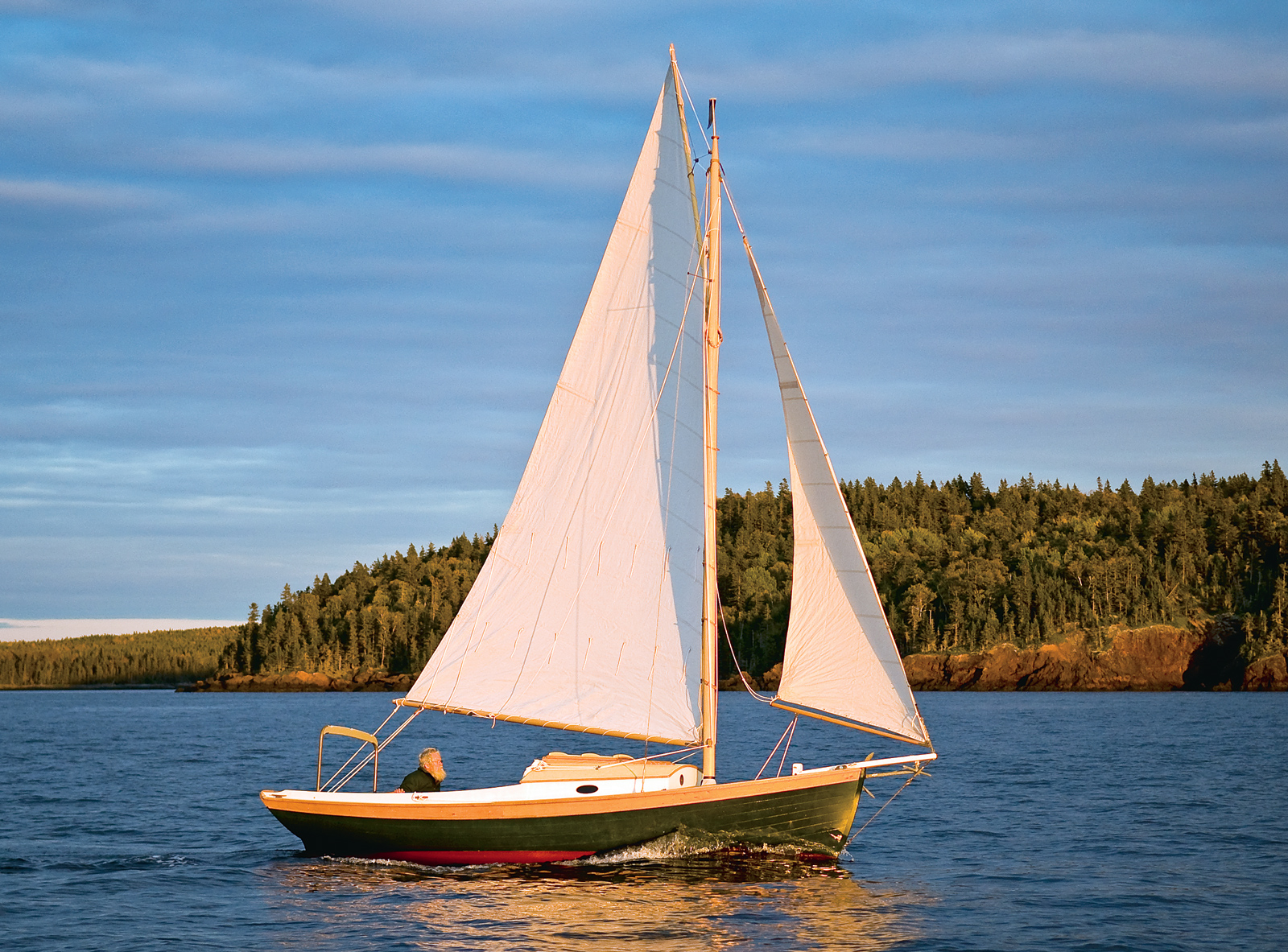 Photo by Benjamin Mendlowitz
Photo by Benjamin MendlowitzInspired by N.G. Herreshoff’s Buzzards Bay 12 1⁄2-footer and Joel White’s Flatfish, this 20′ cruiser, designed and built by Harry Bryan, cuts a handsome profile underway.
KATIE and Joel White’s Flatfish measure close to each other in hull and sail area, with KATIE being lighter by about 500 lbs, and narrower on deck by 6″. Harry gave her more freeboard and a larger cabin, and opted for a bowsprit for ease in handling and carrying the anchor. Her shorter forward overhang results in about a foot more waterline length. The big difference, and one sought for in her design is shallower draft. With centerboard raised, the Flatfish draws 2′ 2″, but KATIE is shallower by 6″!
The Bryans’ New Brunswick home fronts on a cove that dries out at low tide, so Harry devised a nearly neutral-buoyancy cradle for KATIE that supports her and holds her upright while grounded. That’s why her keel is built level, without the usual drag, or downward slope as it approaches the rudder. It’s a setup that opens possibilities for others having access only to tidal waterfront. At only 2,400 lbs, this boat also offers a chance for distant voyaging as it can be towed many miles behind the family car or pickup to reach the mecca of one’s choice. Once there, you can overnight or go longer and enjoy exploring an entirely new area. Camping onboard while on the road makes sense and saves on motel costs. With a level keel to sit on, she’ll look just right on a standard flatbed or boat trailer without requiring special blocking to level her waterline. A couple of people should be able to step or unstep her 65-lb, 25′ mast without the aid of a crane.
There can be no doubt of a boat this shallow needing a centerboard, but Harry kept it small and shaped it, and the trunk in which it lives, to be as unobtrusive as possible. The trunk is so short and so low that it seems like a convenient footrest in the cabin. The higher, aft part of the trunk runs up under the bridge deck, out of sight and completely out of the way. Interestingly, but not surprisingly for one who values native cedar and avoids plywood, Harry has designed a cedar-cored, fiberglass-and-epoxy-sheathed centerboard.
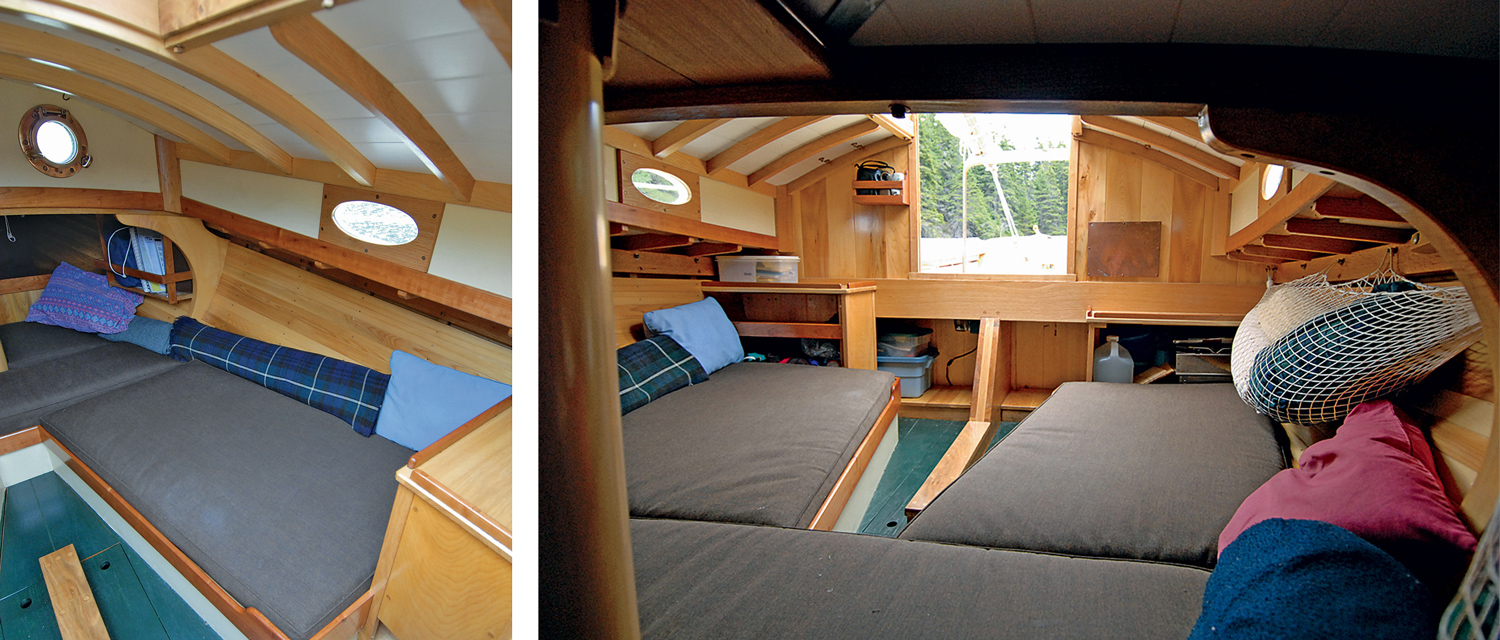 Photos by Bryan Gagner
Photos by Bryan GagnerTwo berths that run up under the foredeck provide comfortable refuge for short-term cruisers. The centerboard trunk, made as unobtrusive as can be, doubles as a companionway step or a footrest.
KATIE’s accommodations are minimal to be sure, but she’s set up with all the short-cruise essentials: Two berths run up under the foredeck and, aft, serve as settees over which there’s full sitting headroom. Against the cabin’s aft bulkhead on both sides are shelves and lockers that can be tailored to suit whatever galley gear a person chooses to carry or build in, while farther aft under the bridge deck on each side of the centerboard trunk is space for provisions and more cruising gear. Way forward, beyond the berths, is a platform for additional stowage under which (under hinged flaps) the anchor rode lives.
The plans show an afterdeck and bridge deck that are slightly higher than the fore-and-aft cockpit settees that run between them. But, in this first boat, the Bryans decided to bring all to a common height to encourage outside sleeping and napping. Storage spaces are located under the afterdeck and at the forward end of the cockpit, under the overhanging bridge deck, where gear will stay reasonably dry.
Because the cockpit is made deep for comfort and is therefore not self-bailing, rainwater collects there. But the bulkhead is watertight, so the cabin remains isolated and dry. In the future, to take care of the rain, Harry plans on an awning or a solar-powered bilge pump.
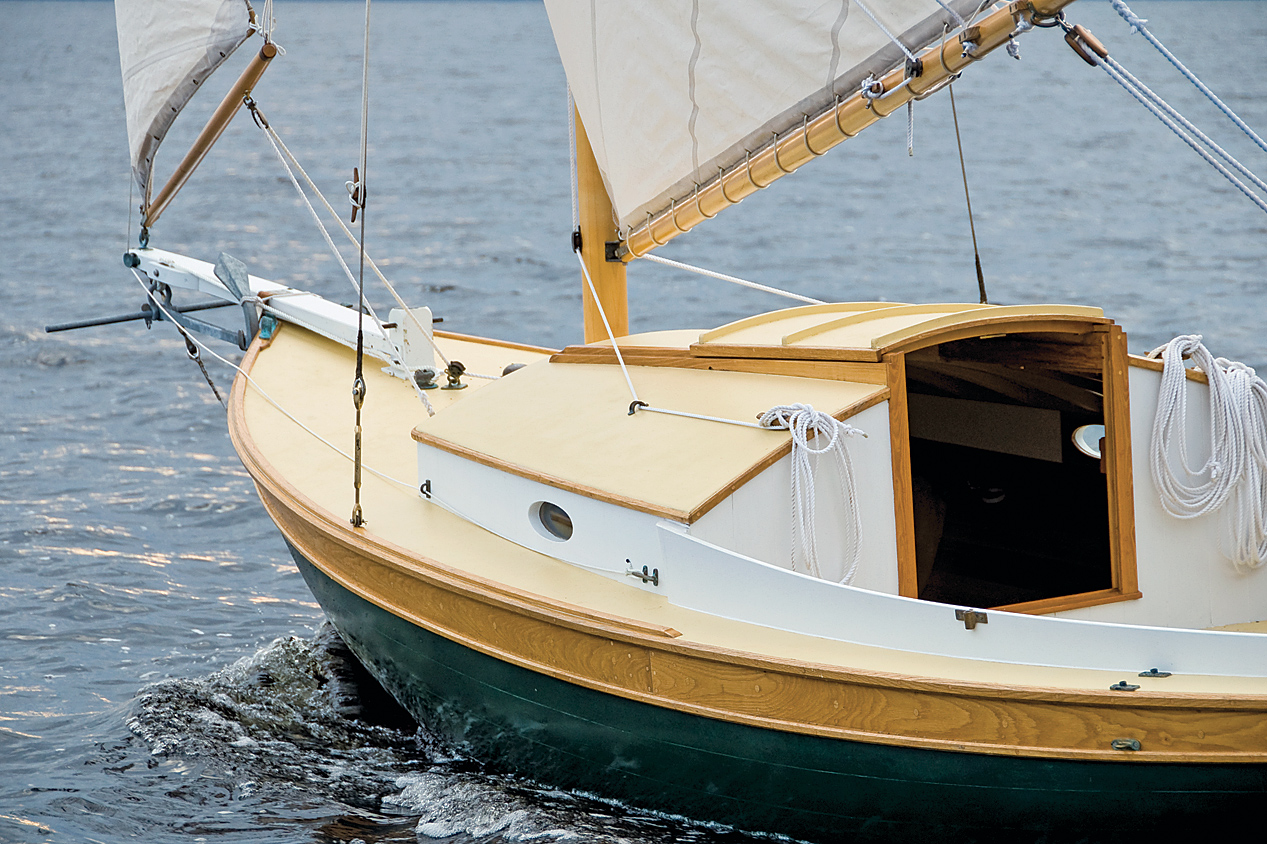 Photo by Benjamin Mendlowitz
Photo by Benjamin MendlowitzRobust construction details like her square-sided, no-nonsense bowsprit and heavy toerails inspire confidence that she is well built and seaworthy.
How does KATIE sail? By observing her in moderate conditions when we photographed her last fall, I’d say fast and fine, completely under easy control the entire time. From the designer/ builder, here’s how Harry describes it: “The helm is perfect in the conditions we had for the photo shoot. Martha and I had her out in a puffy nor’wester and found that a single reef did much to ease the helm. Ultimately, if the helm should prove heavy, 8″ or 1′ added to the bowsprit and a larger jib should balance things. These are probably just the worries of a new parent hoping his baby isn’t defective in some way. She seems fast even before the wind is strong enough to ripple the water.”
The bowsprit adds shippiness forward, particularly with an honest-to-God stock anchor hanging from it, ready to be dropped instantly and retrieved without depositing mud on the deck. The gallows aft also gives a clear impression that this is a serious cruiser despite her small size. You have no worry about the boom whacking you on the noggin when lowering the mainsail; the boom gallows takes care of that and provides a secure support for the boom while tying in a reef. It’s a great, but largely unappreciated feature.
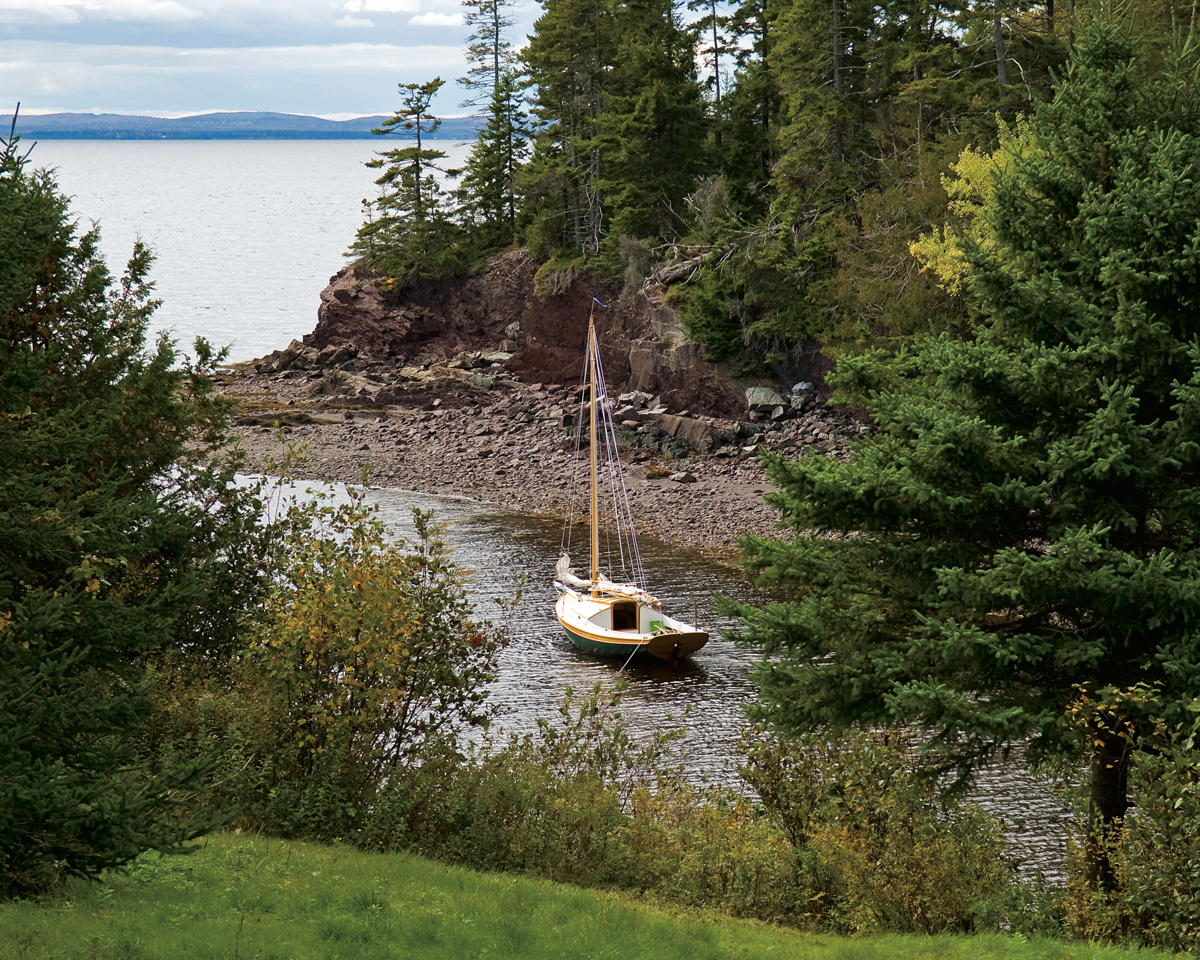 Photo by Benjamin Mendlowitz
Photo by Benjamin MendlowitzAt 2,400 lbs, KATIE is easily trailered and her 65-lb mast can be stepped and unstepped by two people, making her the perfect little getaway cruiser for adventures near and far.
KATIE has no engine installed. There’s a big, curved sweep (oar) in two pieces that can be used either for sculling or for single-oared rowing, with the rudder offset to compensate. Harry has also equipped KATIE with a self-contained Torqeedo electric outboard motor (see review in WB No. 205). Knowing Harry, and having a good idea of how well KATIE moves under sail, I doubt if either will ever see much use.
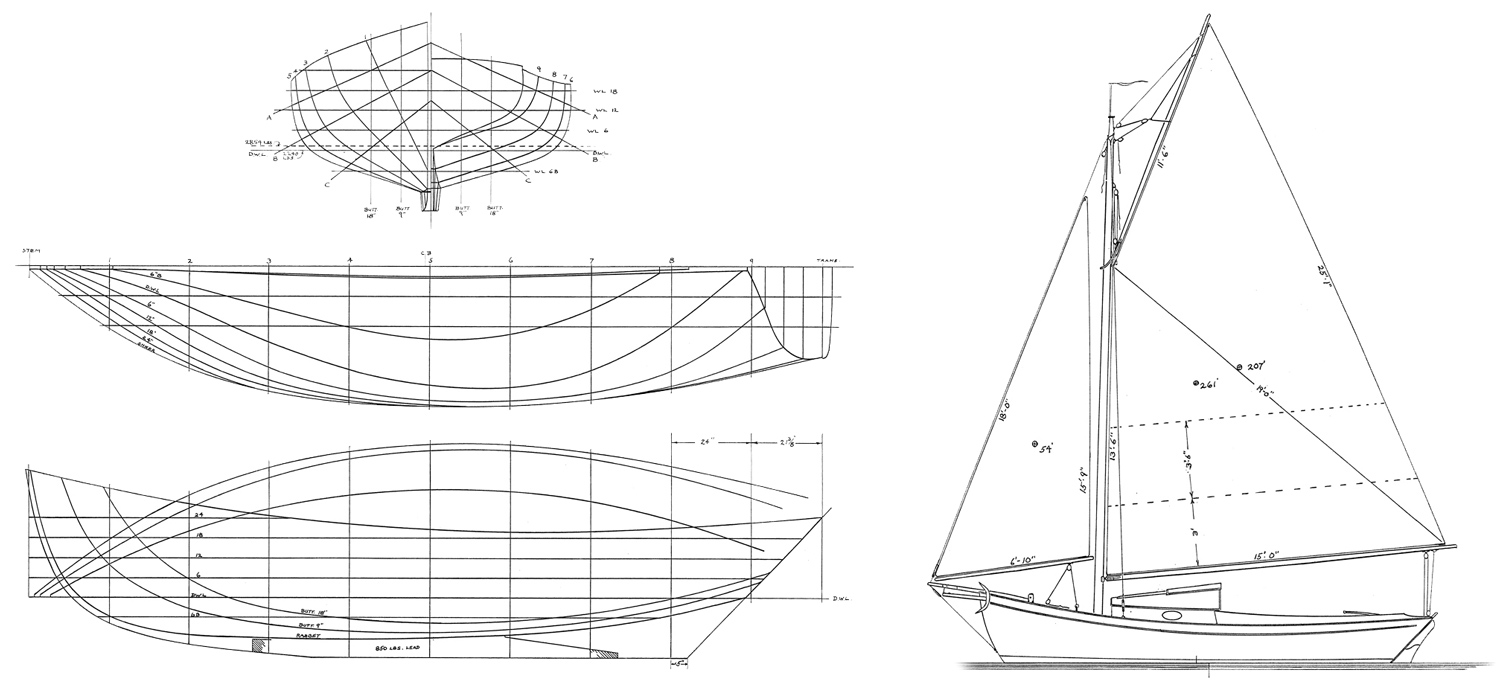
KATIE’s firm bilges, moderate deadrise, and decidedly “shippy” sheer relate the influence of N.G. Herreshoff’s Buzzards Bay 121⁄2 while her underwater profile indicates her kinship to Joel White’s keel/centerboard Flatfish. KATIE will prove a fine legacy to her forebears.
This Boat Profile was published in Small Boats 2010 — for more information, visit Bryan Boatbuilding.
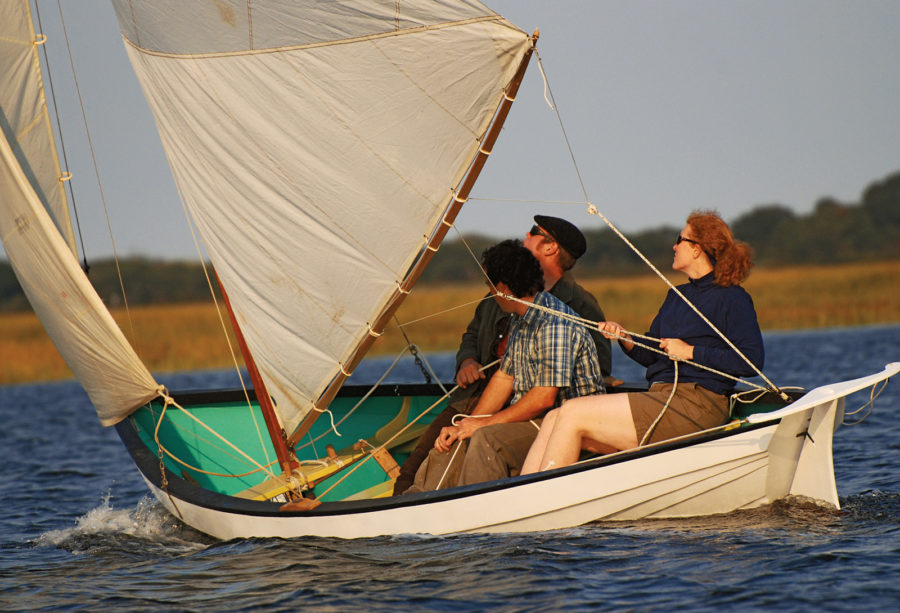
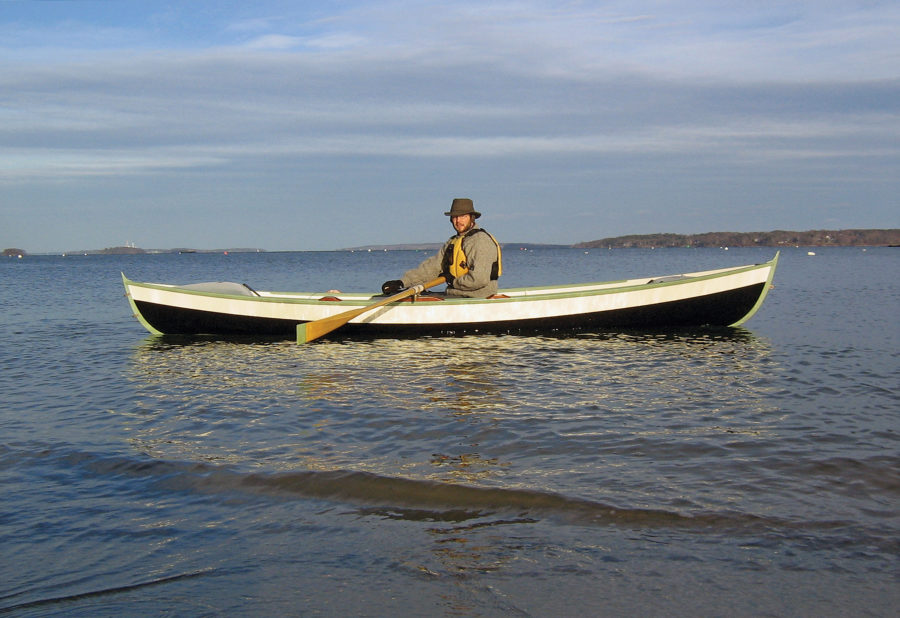
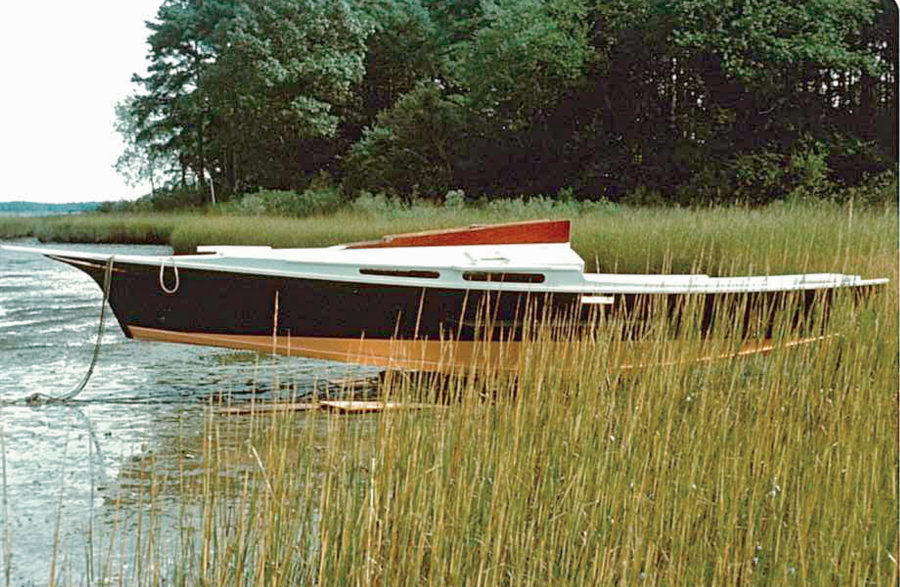
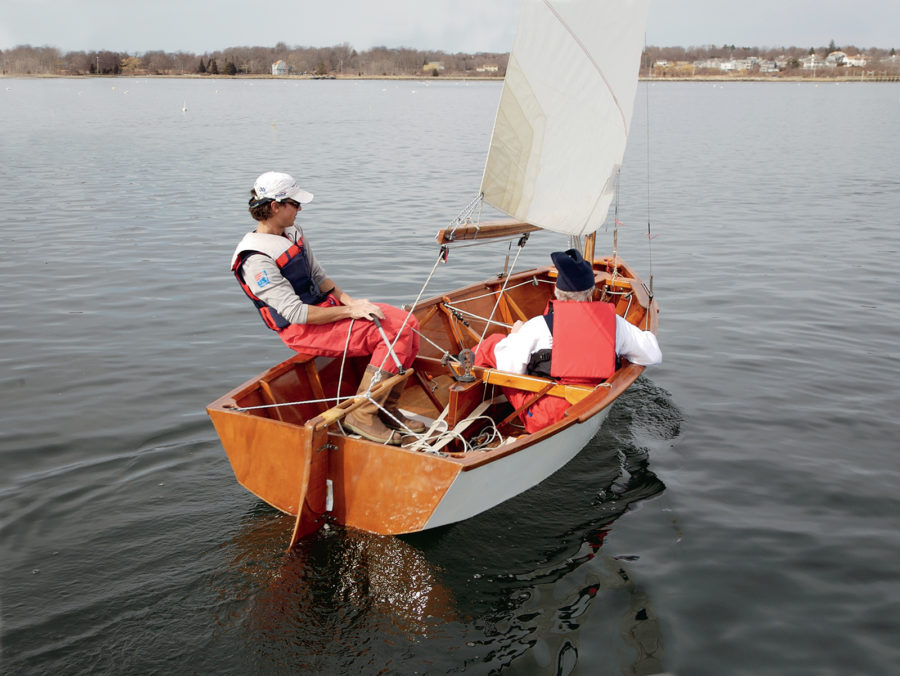
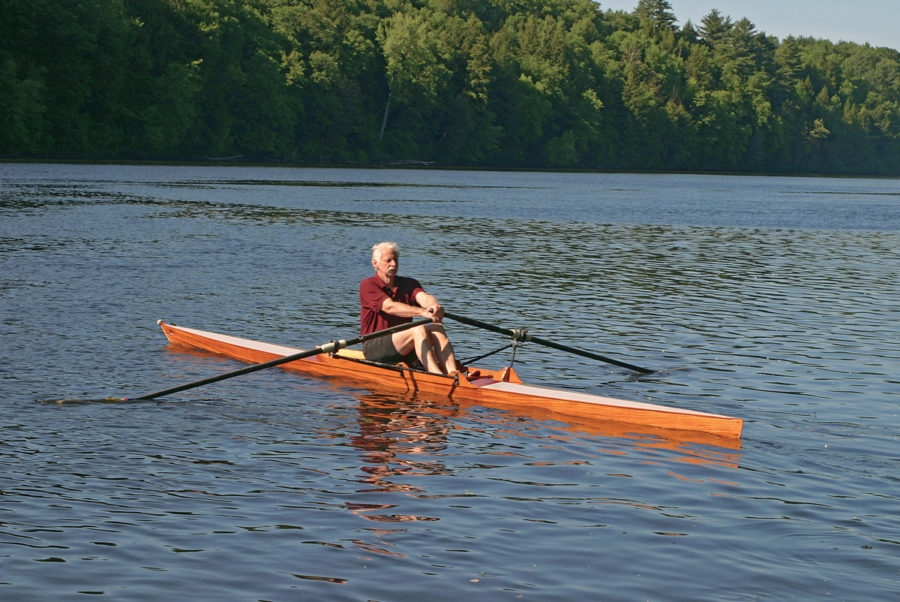
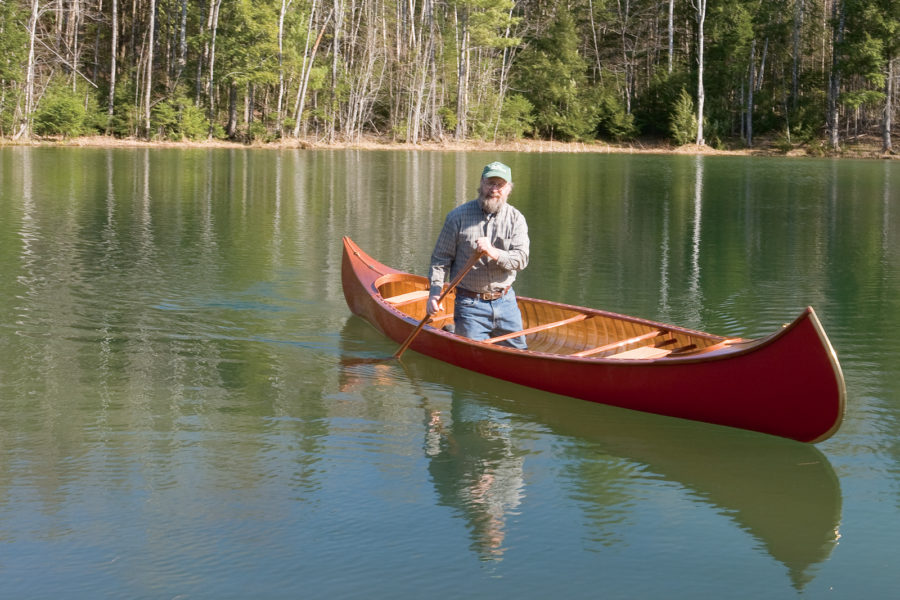
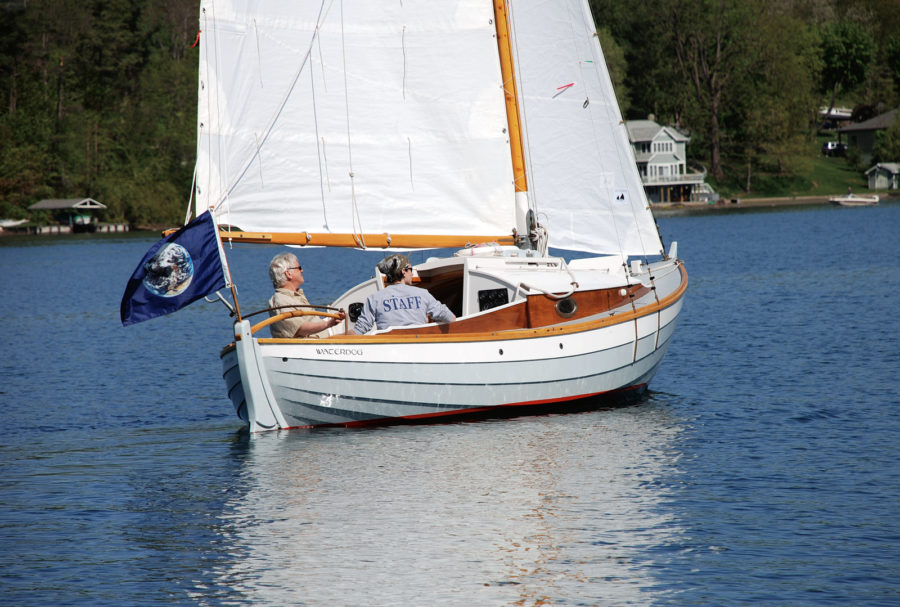
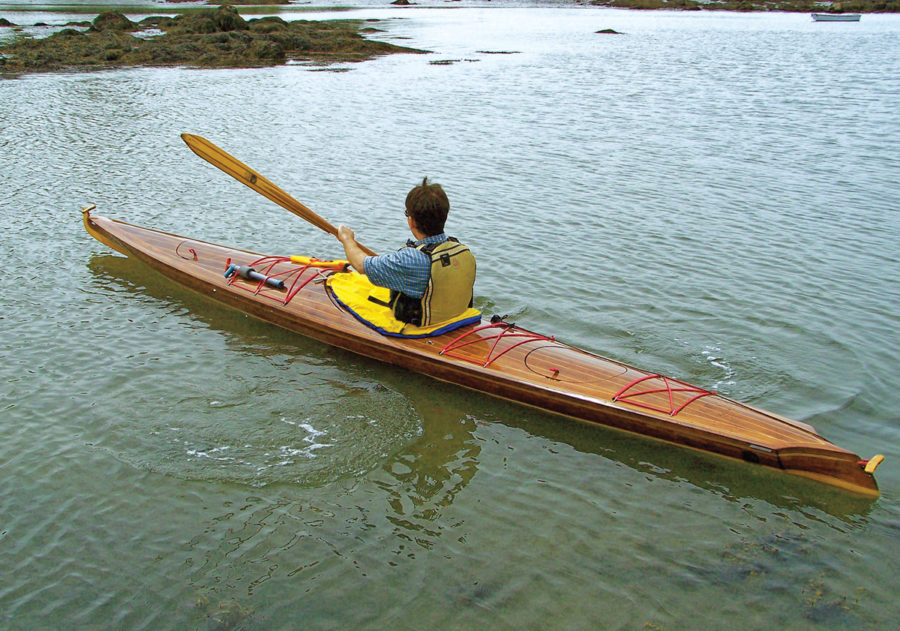
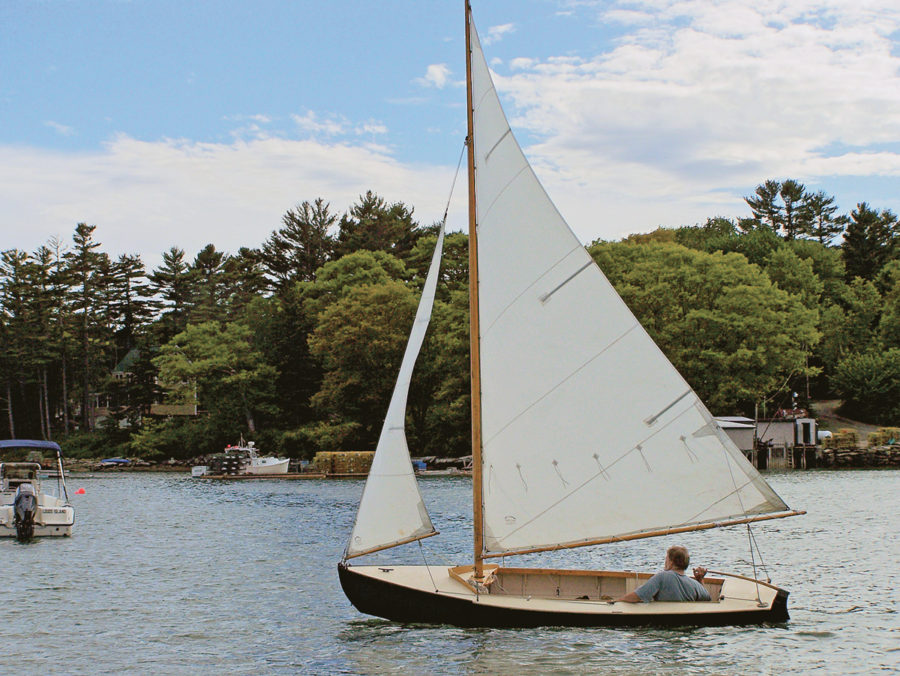
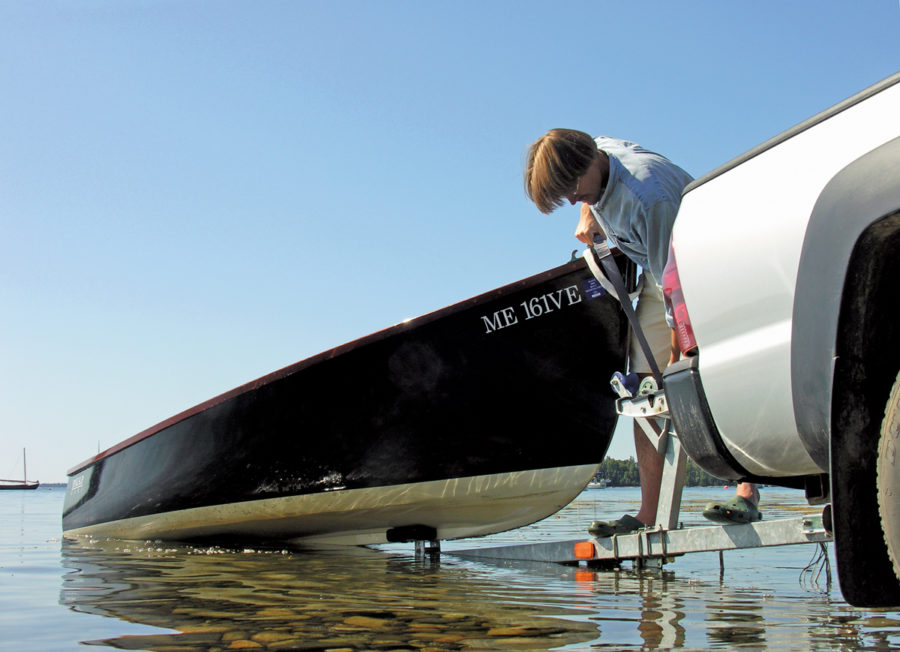
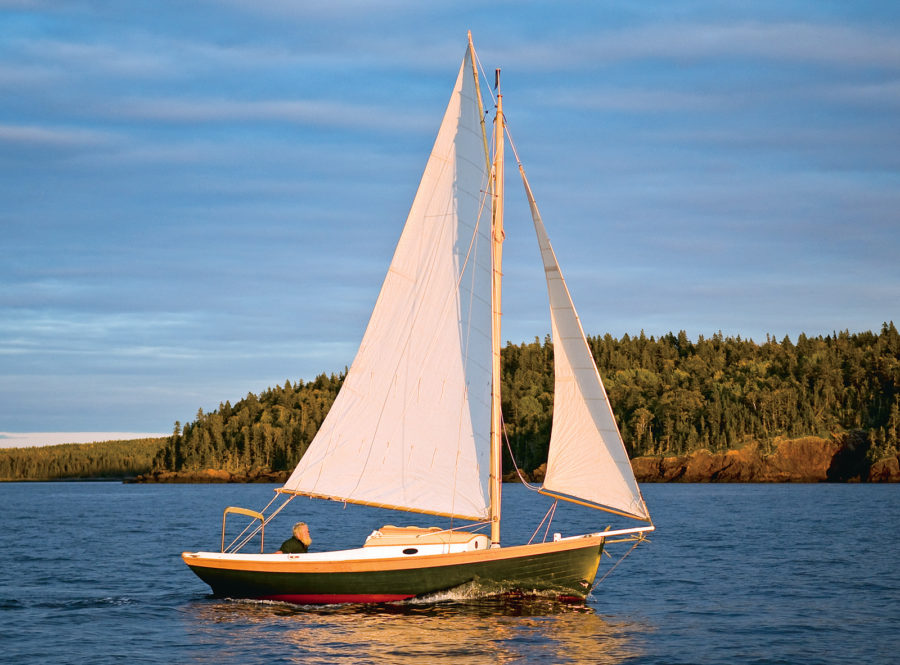
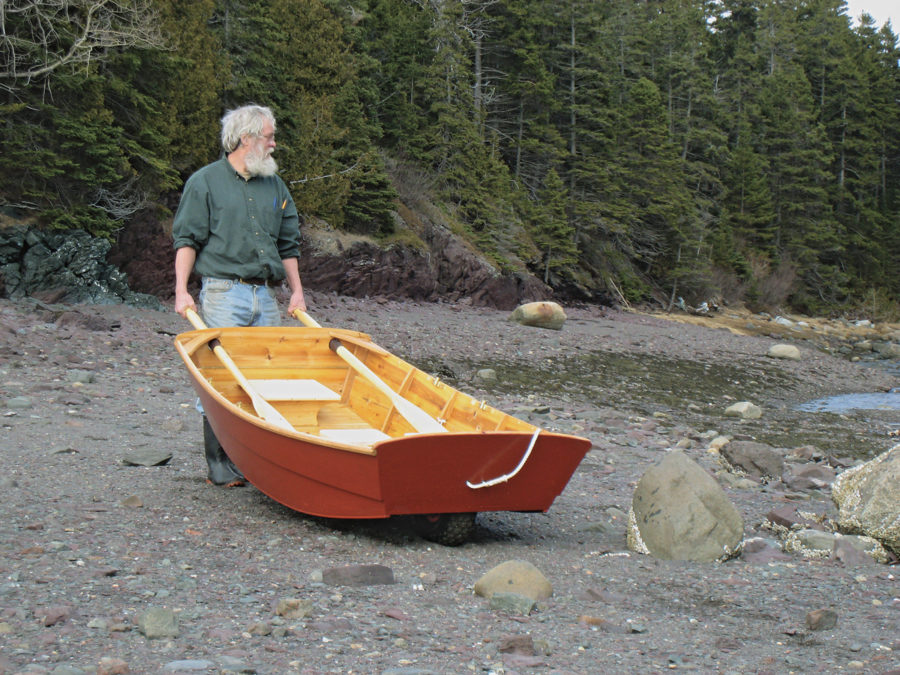
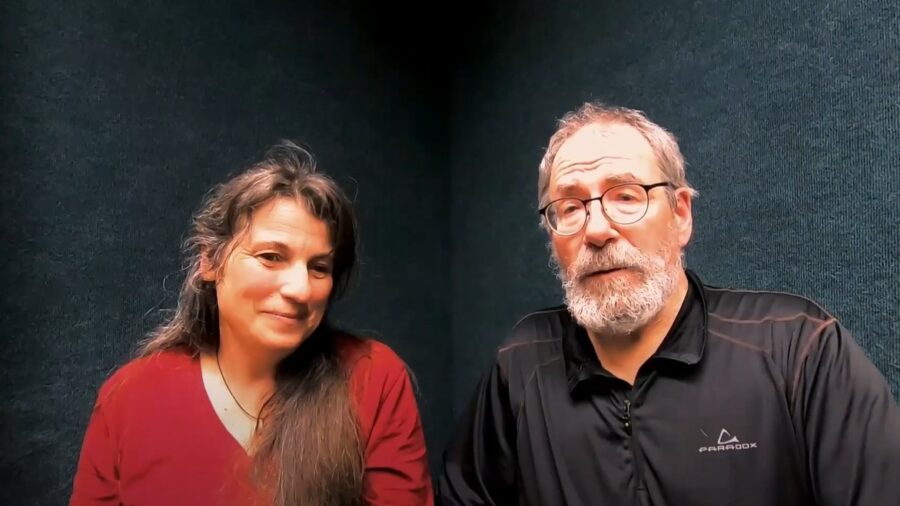
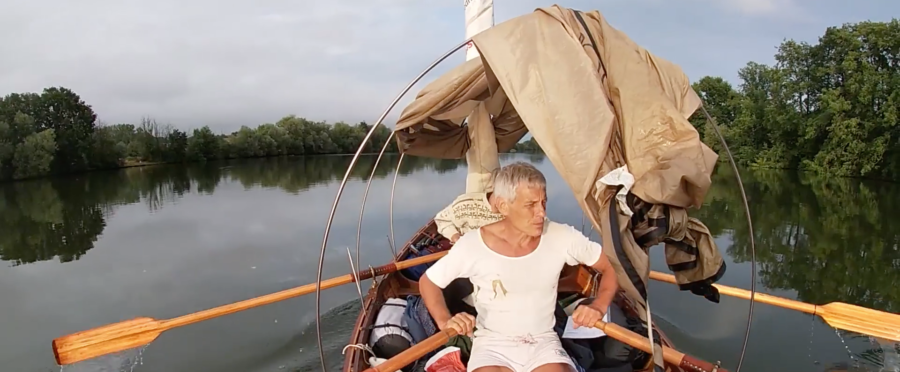
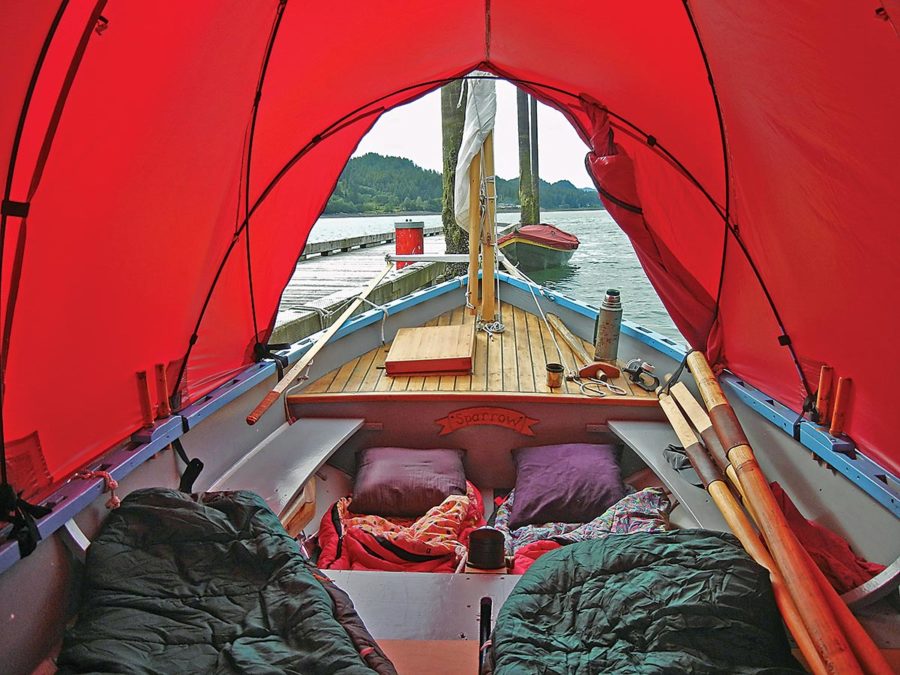
I had the pleasure of visiting Harry and Martha (and KATIE) when on a trip with my family. She’s a heartachingly fine boat to observe and be aboard.
I had the great luck to own HARD TACK, an L.Francis Herreshoff Prudence-class sloop. Built by Quincey Adams Yacht Yard in 1937, she is the boat pictured in Sensible Cruising Designs. I think, genealogically speaking, she must be a second cousin to KATIE. For looks, saltiness, comfort and sweet sailing in a big/small boat she is, to me, at the top of the list. I believe the N.G. and L. F. Herreshoff designs are all interpretations of the Abacos dinghies that were used throughout the islands, and both coasts of Florida, in the sponge and turtle fisheries there. With just the tiniest additional rake to stem, and stern, and by making her shoal draft, Harry Bryan has taken the KATIE design back close to those roots. For a boat with not much more than a plank on edge keel, Abacos dinghies sail remarkable well on all points of sail and I bet KATIE does too.
What a beauty of design, KATIE looks just perfect for a comfy overnight and would look very familiar to the Chiloé Islands inhabitants of southern Chile, that before the diesel engines, sailed those archipelago waters in shallow draft gaff-rigged “lanchas” as they called them. Those working boats were a common sight in the channels and bays, but are almost extinguished nowadays.
By the way, it would be very interesting to have a tabernacle-equipped version to make for an easier means of stepping the mast.